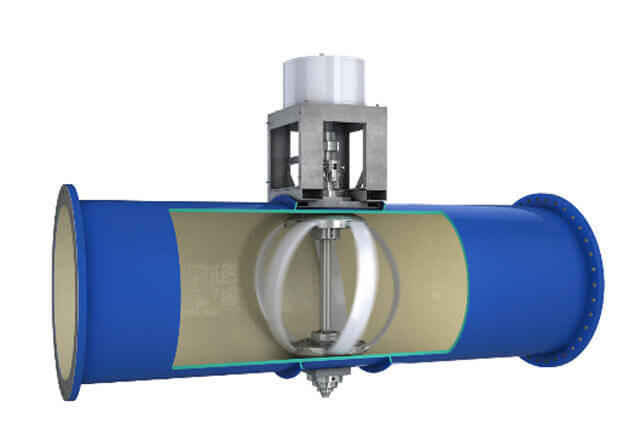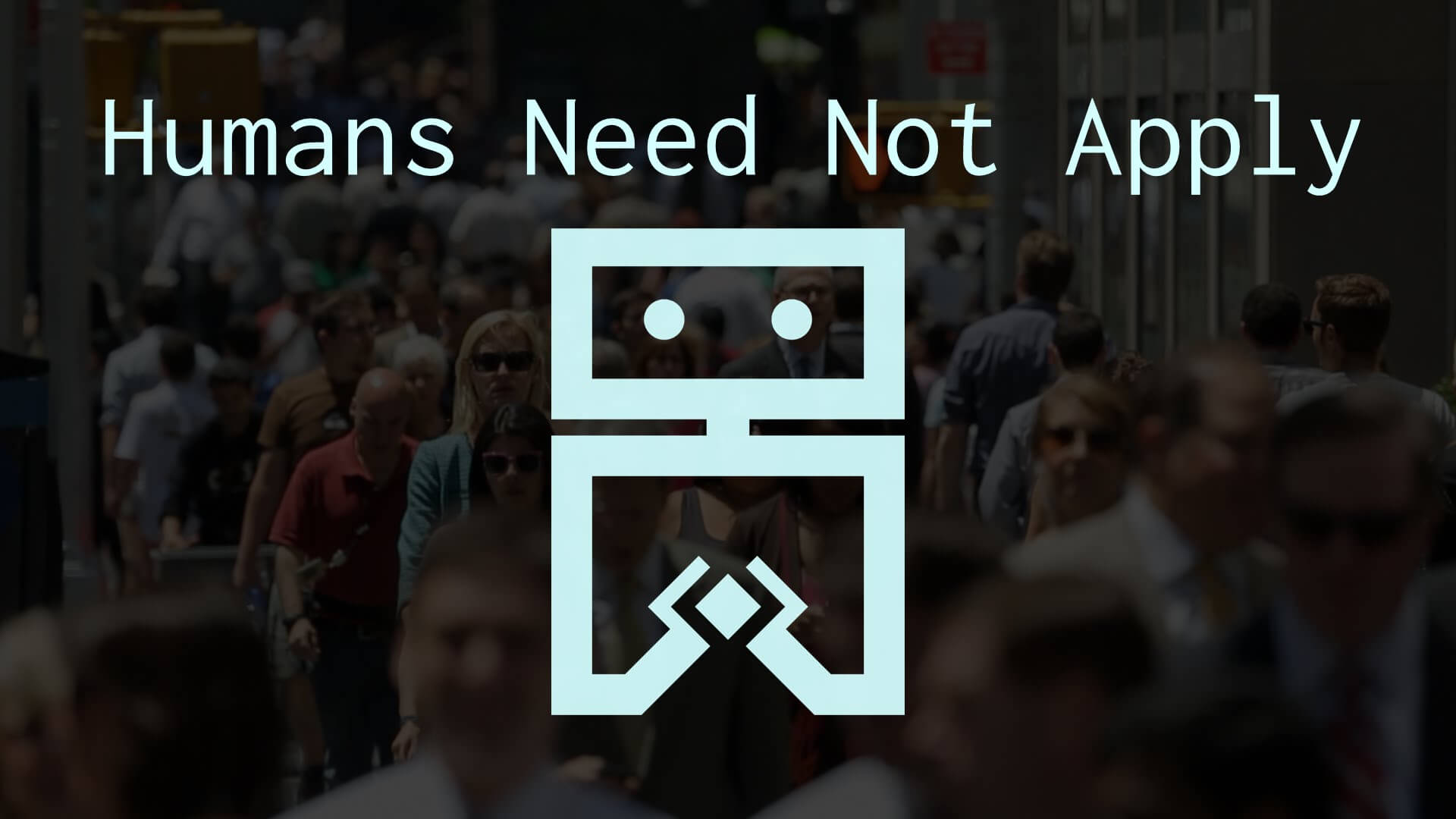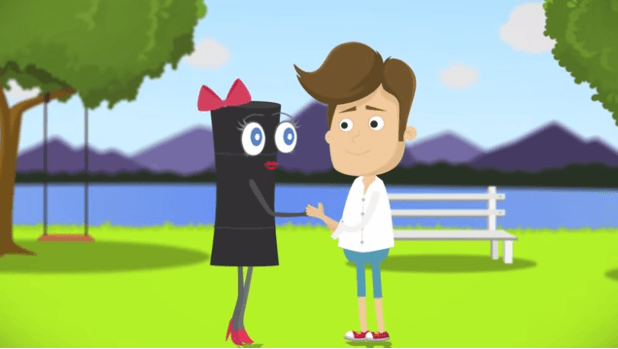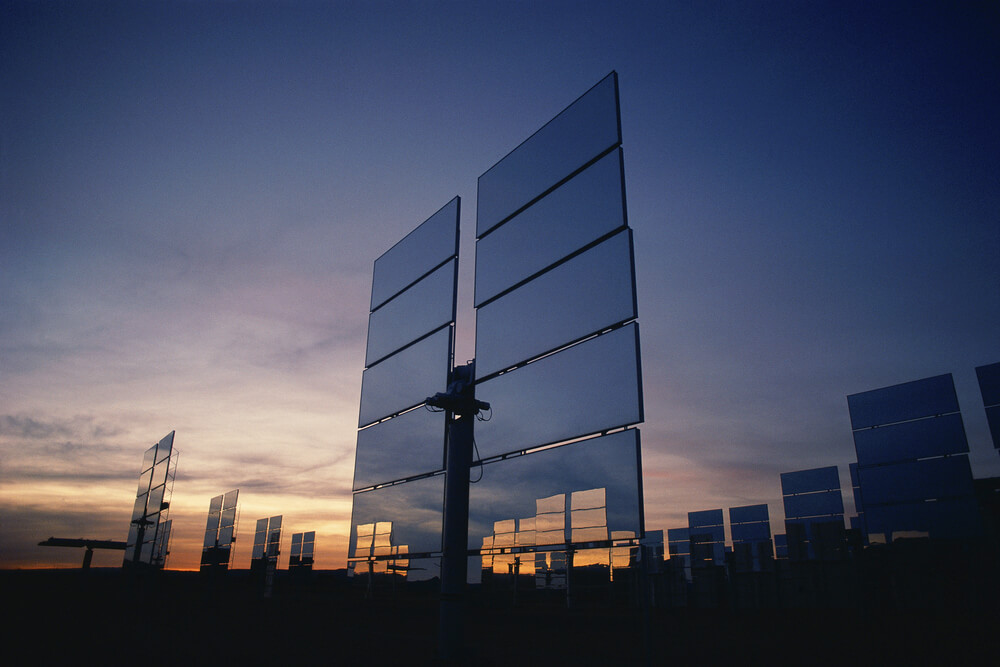Portland’s New Pipes Harvest Power From Drinking Water | We Are Change
 Fact Coexist
Fact Coexist
If you live in Portland, your lights may now be partly powered by your drinking water. An ingenious new system captures energy as water flows through the city’s pipes, creating hydropower without the negative environmental effects of something like a dam.
Small turbines in the pipes spin in the flowing water, and send that energy into a generator.
“It’s pretty rare to find a new source of energy where there’s no environmental impact,” says Gregg Semler, CEO of Lucid Energy, the Portland-based startup that designed the new system. “But this is inside a pipe, so no fish or endangered species are impacted. That’s what’s exciting.”
For water utilities, which use massive amounts of electricity, the system can make it cheaper to provide clean drinking water. Utilities can either use the power themselves or sell it to a city as a new source of revenue.
“We have a project in Riverside, California, where they’re using it to power streetlights at night,” Semler says. “During the day, when electricity prices are high, they can use it to offset some of their operating costs.”
In Portland, one of the city’s main pipelines now uses Lucid’s pipes to make power that’s sent into the grid. Though the system can’t generate enough energy for an entire city, the pipes can power individual buildings like a school or library, or help offset a city’s total energy bill. Unlike wind or solar power, the system can generate electricity at any time of day, regardless of weather, since the pipes always have water flowing through them.
The pipes can’t generate power in every location; they only work in places where water is naturally flowing downward with gravity (if water is being pumped, the system would waste energy). But they have another feature that can be used anywhere: The pipes have sensors that can monitor water, something that utilities couldn’t do in the past.
“We made electrical infrastructure really smart over the last 20 to 25 years, but the same hasn’t happened in water,” Semler says. He points to the example of a pipe that burst near UCLA last year, wasting a staggering 20 million gallons of water in the middle of California’s crippling drought.
“They didn’t really know that the pipe burst until somebody from UCLA called,” Semler explains. “Our pipe can get indicators like pressure, a leading indicator for whether a pipe is leaking or not. So before it bursts and before we waste all the water, there are onboard information systems that water agencies can get to more precisely manage their infrastructure.”
Sensors in the pipe can also monitor water quality, making sure it’s safe to drink.
The company hopes to work with cities to install new systems as old pipes wear out. They’re also hoping to expand to the developing world. “It’s a great source of remote power,” says Semler. “So in places outside the city that don’t have an electrical grid, you’re able to use the system to generate energy.”
The biggest potential for the new system may be in places like California, where 20% of total energy use goes into the water supply-and even more electricity will be used as cities start to install desalination plants. With the pipes, utilities can generate some of their own much-needed power.
“There’s a lot of energy in going into making sure we have safe clean drinking water,” Semler says. “Our focus is really on helping water become more sustainable.”
Plants talk to each other using an internet of fungus
It’s an information superhighway that speeds up interactions between a large, diverse population of individuals. It allows individuals who may be widely separated to communicate and help each other out. But it also allows them to commit new forms of crime.
No, we’re not talking about the internet, we’re talking about fungi. While mushrooms might be the most familiar part of a fungus, most of their bodies are made up of a mass of thin threads, known as a mycelium. We now know that these threads act as a kind of underground internet, linking the roots of different plants. That tree in your garden is probably hooked up to a bush several metres away, thanks to mycelia.
The more we learn about these underground networks, the more our ideas about plants have to change. They aren’t just sitting there quietly growing. By linking to the fungal network they can help out their neighbours by sharing nutrients and information – or sabotage unwelcome plants by spreading toxic chemicals through the network. This “wood wide web”, it turns out, even has its own version of cybercrime.
Around 90% of land plants are in mutually-beneficial relationships with fungi. The 19th-century German biologist Albert Bernard Frank coined the word “mycorrhiza” to describe these partnerships, in which the fungus colonises the roots of the plant.
Fungi have been called ‘Earth’s natural internet’
In mycorrhizal associations, plants provide fungi with food in the form of carbohydrates. In exchange, the fungi help the plants suck up water, and provide nutrients like phosphorus and nitrogen, via their mycelia. Since the 1960s, it has been clear that mycorrhizae help individual plants to grow.
Fungal networks also boost their host plants’ immune systems. That’s because, when a fungus colonises the roots of a plant, it triggers the production of defense-related chemicals. These make later immune system responses quicker and more efficient, a phenomenon called “priming”. Simply plugging in to mycelial networks makes plants more resistant to disease.
But that’s not all. We now know that mycorrhizae also connect plants that may be widely separated. Fungus expert Paul Stamets called them “Earth’s natural internet” in a 2008 TED talk. He first had the idea in the 1970s when he was studying fungi using an electron microscope. Stamets noticed similarities between mycelia and ARPANET, the US Department of Defense’s early version of the internet.
Film fans might be reminded of James Cameron’s 2009 blockbuster . On the forest moon where the movie takes place, all the organisms are connected. They can communicate and collectively manage resources, thanks to ” some kind of electrochemical communication between the roots of trees“. Back in the real world, it seems there is some truth to this.
It has taken decades to piece together what the fungal internet can do. Back in 1997, Suzanne Simard of the University of British Columbia in Vancouver found one of the first pieces of evidence. She showed that Douglas fir and paper birch trees can transfer carbon between them via mycelia. Others have since shown that plants can exchange nitrogen and phosphorus as well, by the same route.
These plants are not really individuals
Simard now believes large trees help out small, younger ones using the fungal internet. Without this help, she thinks many seedlings wouldn’t survive. In the 1997 study, seedlings in the shade – which are likely to be short of food – got more carbon from donor trees.
“These plants are not really individuals in the sense that Darwin thought they were individuals competing for survival of the fittest,” says Simard in the 2011 documentary Do Trees Communicate? “In fact they are interacting with each other, trying to help each other survive.”
However, it is controversial how useful these nutrient transfers really are. “We certainly know it happens, but what is less clear is the extent to which it happens,” says Lynne Boddy of Cardiff University in the UK.
While that argument rages on, other researchers have found evidence that plants can go one better, and communicate through the mycelia. In 2010, Ren Sen Zeng of South China Agricultural University in Guangzhou found that when plants are attached by harmful fungi, they release chemical signals into the mycelia that warn their neighbours.
Tomato plants can ‘eavesdrop’ on defense responses
Zeng’s team grew pairs of tomato plants in pots. Some of the plants were allowed to form mycorrhizae.
Once the fungal networks had formed, the leaves of one plant in each pair were sprayed with Alternaria solani, a fungus that causes early blight disease. Air-tight plastic bags were used to prevent any above-ground chemical signalling between the plants.
After 65 hours, Zeng tried to infect the second plant in each pair. He found they were much less likely to get blight, and had significantly lower levels of damage when they did, if they had mycelia.
” We suggest that tomato plants can ‘eavesdrop’ on defense responses and increase their disease resistance against potential pathogen,” Zeng and his colleagues wrote. So not only do the mycorrhizae allow plants to share food, they help them defend themselves.
It’s not just tomatoes that do this. In 2013 David Johnson of the University of Aberdeen and his colleagues showed that broad beans also use fungal networks to pick up on impending threats – in this case, hungry aphids.
Johnson found that broad bean seedlings that were not themselves under attack by aphids, but were connected to those that were via fungal mycelia, activated their anti-aphid chemical defenses. Those without mycelia did not.
“Some form of signalling was going on between these plants about herbivory by aphids, and those signals were being transported through mycorrhizal mycelial networks,” says Johnson.
But just like the human internet, the fungal internet has a dark side. Our internet undermines privacy and facilitates serious crime – and frequently, allows computer viruses to spread. In the same way, plants’ fungal connections mean they are never truly alone, and that malevolent neighbours can harm them.
For one thing, some plants steal from each other using the internet. There are plants that don’t have chlorophyll, so unlike most plants they cannot produce their own energy through photosynthesis. Some of these plants, such as the phantom orchid, get the carbon they need from nearby trees, via the mycelia of fungi that both are connected to.
Other orchids only steal when it suits them. These “mixotrophs” can carry out photosynthesis, but they also “steal” carbon from other plants using the fungal network that links them.
That might not sound too bad. However, plant cybercrime can be much more sinister than a bit of petty theft.
Plants have to compete with their neighbours for resources like water and light. As part of that battle, some release chemicals that harm their rivals.
This “allelopathy” is quite common in trees, including acacias, sugarberries, American sycamores and several species of Eucalyptus. They release substances that either reduce the chances of other plants becoming established nearby, or reduce the spread of microbes around their roots.
Sceptical scientists doubt that allelopathy helps these unfriendly plants much. Surely, they say, the harmful chemicals would be absorbed by soil, or broken down by microbes, before they could travel far.
But maybe plants can get around this problem, by harnessing underground fungal networks that cover greater distances. In 2011, chemical ecologist Kathryn Morris and her colleagues set out to test this theory.
Morris, formerly Barto, grew golden marigolds in containers with mycorrhizal fungi. The pots contained cylinders surrounded by a mesh, with holes small enough to keep roots out but large enough to let in mycelia. Half of these cylinders were turned regularly to stop fungal networks growing in them.
The team tested the soil in the cylinders for two compounds made by the marigolds, which can slow the growth of other plants and kill nematode worms. In the cylinders where the fungi were allowed to grow, levels of the two compounds were 179% and 278% higher than in cylinders without fungi. That suggests the mycelia really did transport the toxins.
The team then grew lettuce seedlings in the soil from both sets of containers. After 25 days, those grown in the more toxin-rich soil weighed 40% less than those in soil isolated from the mycelia. “These experiments show the fungal networks can transport these chemicals in high enough concentrations to affect plant growth,” says Morris, who is now based at Xavier University in Cincinnati, Ohio.
In response, some have argued that the chemicals might not work as well outside the lab. So Michaela Achatz of the Berlin Free University in Germany and her colleagues looked for a similar effect in the wild.
One of the best-studied examples of allelopathy is the American black walnut tree. It inhibits the growth of many plants, including staples like potatoes and cucumbers, by releasing a chemical called jugalone from its leaves and roots.
Achatz and her team placed pots around walnut trees, some of which fungal networks could penetrate. Those pots contained almost four times more jugalone than pots that were rotated to keep out fungal connections. The roots of tomato seedlings planted in the jugalone-rich soil weighed on average 36% less.
Some especially crafty plants might even alter the make-up of nearby fungal communities. Studies have shown that spotted knapweed, slender wild oat and soft brome can all change the fungal make-up of soils. According to Morris, this might allow them to better target rival species with toxic chemicals, by favouring the growth of fungi to which they can both connect.
Animals might also exploit the fungal internet. Some plants produce compounds to attract friendly bacteria and fungi to their roots, but these signals can be picked up by insects and worms looking for tasty roots to eat. In 2012, Morris suggested that the movement of these signalling chemicals through fungal mycelia may inadvertently advertise the plants presence to these animals. However, she says this has not been demonstrated in an experiment.
As a result of this growing body of evidence, many biologists have started using the term “wood wide web” to describe the communications services that fungi provide to plants and other organisms.
“These fungal networks make communication between plants, including those of different species, faster, and more effective,” says Morris. “We don’t think about it because we can usually only see what is above ground. But most of the plants you can see are connected below ground, not directly through their roots but via their mycelial connections.”
The fungal internet exemplifies one of the great lessons of ecology: seemingly separate organisms are often connected, and may depend on each other. “Ecologists have known for some time that organisms are more interconnected and interdependent,” says Boddy. The wood wide web seems to be a crucial part of how these connections form.
This is what the fossil fuel industry thinks about you:
A fossil fuel industry PR group just released this cartoon video as an attack on Global Divestment Day:
This video was put out by the Environmental Policy Alliance, a front group for Big Oil that pushes out specious and inaccurate opposition research on individuals and organizations who fight climate change. The group is led by Rick Berman, who was taped by the New York Times as saying in a talk to oil executives that “you have to play dirty to win”.
This is what the fossil fuel industry is saying about you: that you’re a bunch of big, bad, radicals who want everyone to go hungry in the dark. But we know that’s ridiculous. We know that this movement is pushing for a just, sustainable future for all of us – one where energy is something that helps communities instead of hurting them, and where you don’t need to spend a lot of money to have a voice.
If that’s a movement you’re excited to be part of, join us tomorrow for Global Divestment Day:
Click here to find a Global Divestment Day event.
The industry’s hired guns are trying to take over the #divest hashtag ahead of the big day. Will you help make sure #divest stays a tool that we can connect and celebrate with? Social media can be a simple numbers game, and you can help us beat back these PR flacks:
This video is pretty low… but it’s also pretty laughable. In fact, that’s just what we did when we stumbled across it yesterday.
Then Aaron Packard, our Oceania Region Coordinator, used his own narration skills to do a remix of the video. And THEN the “Environmental Policy Alliance” made YouTube take down our parody version of the video – but you can still listen to Aaron’s fake “oil baron” narration below. If the fossil fuel industry was being honest, this is what they’d actually say:
Apple’s New Headquarters Will Be Powered Entirely By The Sun
” Apple’s New Headquarters Will Be Powered Entirely By The Sun“
Share:

CREDIT: shutterstock
On Tuesday, Apple CEO Tim Cook announced the company’s plans to build a 130-megawatt solar farm to power its stores and facilities located in California. Speaking at a technology conference hosted by Goldman Sachs, Cook said Apple will work with First Solar to build the $850-million plant, which will be sited on 1,300 acres in the interior of central California’s Monterey County. Apple’s two campuses in Cupertino, several hours’ drive north of the plant, as well as a data center and the state’s 52 Apple stores will all get power from the development, according to Cook.
The announcement is the second major solar commitment made by Apple so far this month. Earlier in February, Apple announced it was building a massive solar-powered global data command center in neighboring Arizona. The planned investment of $2 billion will include a 70-megawatt solar farm to power the facility.
Apple currently has three solar farms; two in North Carolina and one in Nevada. In 2013, Apple began using 100 percent renewable energy to power its data centers, a goal not yet achieved by Amazon, Google and Facebook.
“We know at Apple that climate change is real,” Cook said on Tuesday. “Our view is that the time for talk is past and the time for action is now.”
Cook also said that the California solar project, which is the company’s biggest solar deal to-date, will lead to major savings for Apple, though he stressed that the company is doing it because “it’s right to do.”
Apple’s California solar farm, called the First Solar California Flats Solar Project, is the largest solar procurement deal by a company that’s not a utility. It is also the first wholesale commercial and industrial power-purchase (PPA) agreement for First Solar, which signed a 25-year PPA with Pacific Gas and Electric.
“Over time, the renewable energy from California Flats will provide cost savings over alternative sources of energy as well as substantially lower environmental impact,” said Joe Kishkill, Chief Commercial Officer for First Solar, in a statement. “Apple is leading the way in addressing climate change by showing how large companies can serve their operations with 100 percent clean, renewable energy.”
Shares of Arizona-based First Solar, a leading photovoltaic company with over 10 gigawatts installed globally, surged nearly five percent after the news of the Apple deal.
In 2013 Apple hired Lisa Jackson, head of the EPA from 2009 to 2013, as vice president of environmental initiatives. Last summer, Apple released its 2014 Environmental Responsibility Repor t. The report states that the company’s carbon footprint from energy use dropped by nearly a third from fiscal year 2011 to 2013, even as energy consumption increased 44 percent. According to the report, carbon emissions from the company’s manufacturing partners – often located oversees in countries like China – remain the largest portion of Apple’s carbon footprint, an area the company is “committed to addressing.”
The fact that much of Apple’s emissions come from partners overseas underscores a difficult truth for the company: that beyond Apple’s headquarters in renewable-energy friendly California exists the globalized economy that the company depends on for sourcing, manufacturing, shipping, selling, and using their products. This environment is not easily controlled. Apple can set a leading example by building solar farms, but when it comes to the companies that Apple relies on for supply chain purposes like Foxconn and Pegatron, change is harder to enforce.
Elon Musk says Tesla will unveil a new kind of battery to power your home
Tesla didn’t ship nearly as many cars this quarter as it had projected, but CEO Elon Musk remained upbeat during today’s earnings call as he let some details slip about a brand new product. According to Musk, the company is working on a consumer battery pack for the home. Design of the battery is apparently complete, and production could begin in six months. Tesla is still deciding on a date for unveiling the new unit, but Musk said he was pleased with the result, calling the pack “really great” and voicing his excitement for the project.
What would a Tesla home battery look like? The Toyota Mirai, which uses a hydrogen fuel cell, gives owners the option to remove the battery and use it to supply electrical power to their homes. That battery can reportedly power the average home for a week when fully charged. Employees at many big Silicon Valley tech companies already enjoy free charging stations at their office parking lot. Now imagine if they could use that juice to eliminate their home electric bill. A more practical application for your car would be a backup generator during emergencies, which is how Nissan pitches the battery in its Leaf.
Musk said that production of the battery could begin in six months
On an earnings call last year Musk had laid out his ambition to make something that would live in consumers’ homes, instead of their cars. “We are trying to figure out what would be a cool stationary (battery) pack,” Musk said. “Some will be like the Model S pack: something flat, 5 inches off the wall, wall-mounted, with a beautiful cover, an integrated bi-directional inverter, and plug and play.”
“The long-term demand for stationary energy storage is extraordinary,” added JB Straubel, Tesla’s chief technical officer, during that call. “We’ve done a huge amount of effort there and have talked to major utilities and energy service companies.” That plan seems like it’s now much closer to a reality the company can share with the public.
Drew Beal – Kill The Cup || Valhalla Movement Podcast
Drew is someone who I was introduced to that is on a particularly awesome mission – a mission to kill the disposable cup. Yes you heard me right there is an non profit organization whose core mission is to rid our world of disposable coffee cups for the more sustainable alternative.
Adam Hammes – Eco-Fluence || Valhalla Movement Podcast
http://www.eco-fluence.com Adam Hammes is a rare breed in the world of sustainability. He actually is a professional consultant for sustainability for larger organizations and even corporations looking to go green. Might seem weird to many but some businesses really do care and there are lots of factors on the environment that are completely overlooked because our current system puts no monetary costs to pollution.
Jae Sabol – One Community Global Ep. #30 || Valhalla Movement Podcast
http://www.onecommunityglobal.org AUDIO VERSION ON ITUNES: http://bit.ly/ValhallaPodcastiTunes Ever dreamed of a open source eco community? Yup that is what One Community Global is all about. They are striving to make the movement an open source thing and donating all kinds of time to making it happen.
DIY How To Build a Earthship Greenhouse || Valhalla Movement
WANT TO BUILD YOUR OWN FARM OF THE FUTURE? ===\\ We made a DVD and E Book detailing the exact steps and Measurements ////=== SEE THEM HERE: http://goo.gl/0x794r AN EARTHSHIP IN 10 MINUTES! Watch the video of Valhalla Building The Farm of The Future.
Tim Hjersted – Films For Action || Valhalla Movement Podcast
About a year or so ago one of the Valhalla Members stumbled across a pretty awesome website known as Films For Action. http://www.filmsforaction.org – It’s an amazing directory of some of the most powerful user submitted films that are all dedicated to having a positive impact and inspiring action.
Cowspiracy Official Trailer HD
COWSPIRACY: The Sustainability Secret (http://cowspiracy.com) is a groundbreaking feature-length environmental documentary following an intrepid filmmaker as he uncovers the most destructive industry facing the planet today, and investigates why the world’s leading environmental organizations are too afraid to talk about it. This documentary will be as eye-opening as “Blackfish” and as inspiring as “An Inconvenient Truth.”
Chasing Ice OFFICIAL TRAILER
Acclaimed environmental photographer James Balog was once a skeptic about climate change and a cynic about the nature of academic research. But through his Extreme Ice Survey, he discovers undeniable evidence of our changing planet. In Chasing Ice, Balog deploys revolutionary time-lapse cameras to capture a multi-year record of the world’s changing glaciers.
Jean-Martin Fortier – The Market Gardener Ep. #27 || Valhalla Movement Podcast
Listen to the Podcast on the go via iTunes: http://bit.ly/ValhallaPodcastiTunes Jean-Martin Fortier (JM) is an absolute superhero in my books. He has transformed a 1.5 acre piece of land into a market garden that provides for hundreds of families in less than an hours drive from my home town and he is doing it in an all organic – all by hand (or small power tools) kind of way.
Nature Is Speaking – Julia Roberts is Mother Nature | Conservation International (CI)
Julia Roberts, Harrison Ford, Kevin Spacey, Edward Norton, Penélope Cruz, and Robert Redford all join forces to give nature a voice. Watch the films and take action at http://natureisspeaking.org | Follow CI on Twitter: http://www.twitter.com/ConservationOrg Follow CI on Facebook: https://www.facebook.com/conservation.intl Follow CI on Instagram: https://www.instagram.com/ConservationOrg
“CHASING ICE” captures largest glacier calving ever filmed – OFFICIAL VIDEO
On May 28, 2008, Adam LeWinter and Director Jeff Orlowski filmed a historic breakup at the Ilulissat Glacier in Western Greenland. The calving event lasted for 75 minutes and the glacier retreated a full mile across a calving face three miles wide.
Michael Tellinger – Ubuntu Party Ep. #26 || Valhalla Movement Podcast
Listen to Audio Version of Podcast on iTunes: http://bit.ly/ValhallaPodcastiTunes Ubuntu Party: http://www.ubuntuparty.org.za/ Michael Tellinger is becoming a popular icon in the move towards a moneyless society. Having started a political party down in South Africa known as The Ubuntu Party it seems his teachings of contributionism and his vast knowledge of the past are really speaking truth to those interested.
“What’s Possible,” a New Film for World Leaders on the Urgency of Global Warming
The film, narrated by Morgan Freeman, premiered before world leaders this morning at the UN climate change summit. Watch it here, along with an interview with the filmmakers, who share their urgent message with Bill.
Wealth Inequality in America
Infographics on the distribution of wealth in America, highlighting both the inequality and the difference between our perception of inequality and the actual numbers. The reality is often not what we think it is. References: http://www.motherjones.com/politics/2011/02/income-inequality-in-america-chart-graph http://danariely.com/2010/09/30/wealth-inequality/ http://thinkprogress.org/economy/2011/10/03/334156/top-five-wealthiest-one-percent/ http://money.cnn.com/2012/04/19/news/economy/ceo-pay/index.htm










